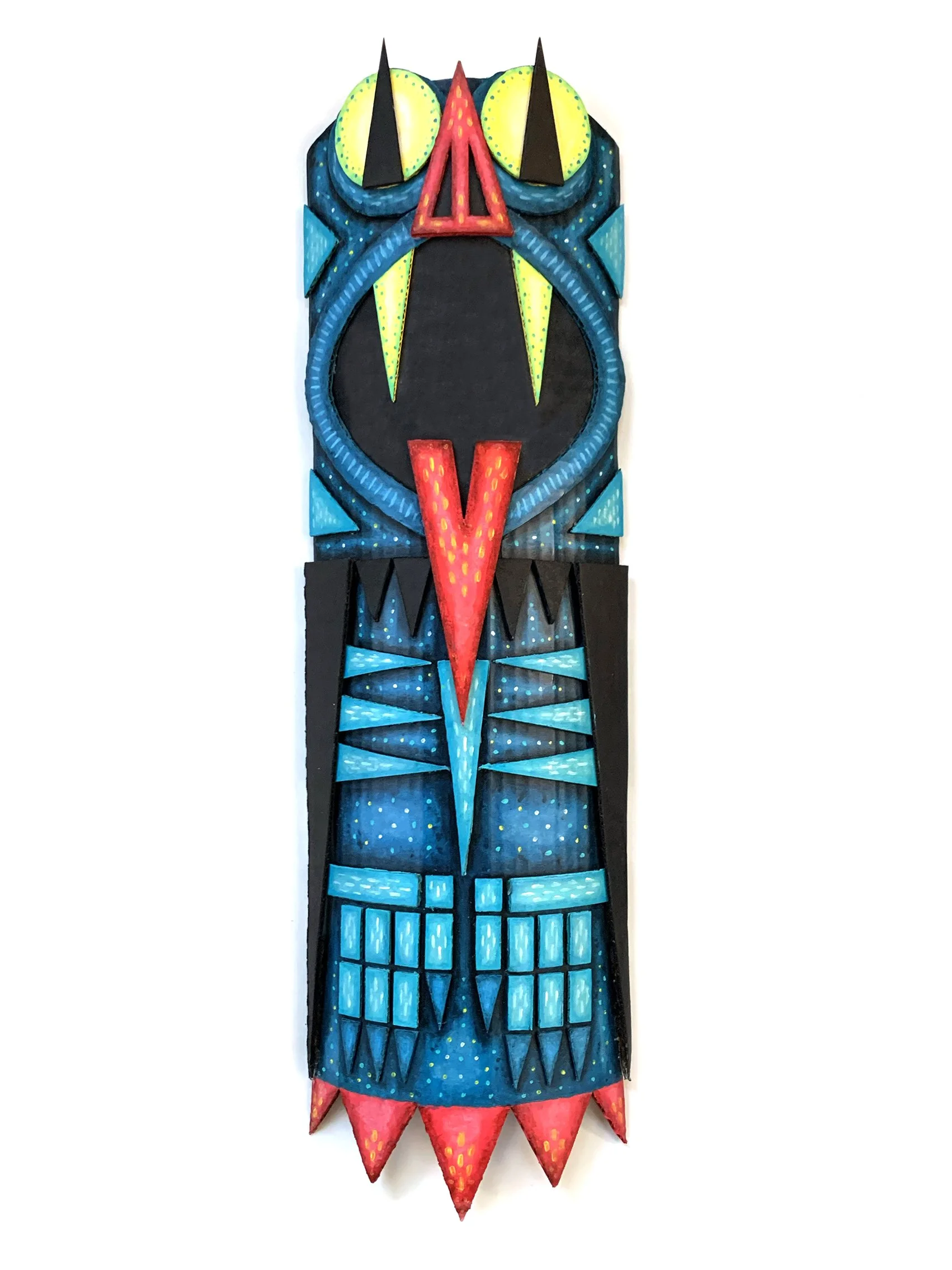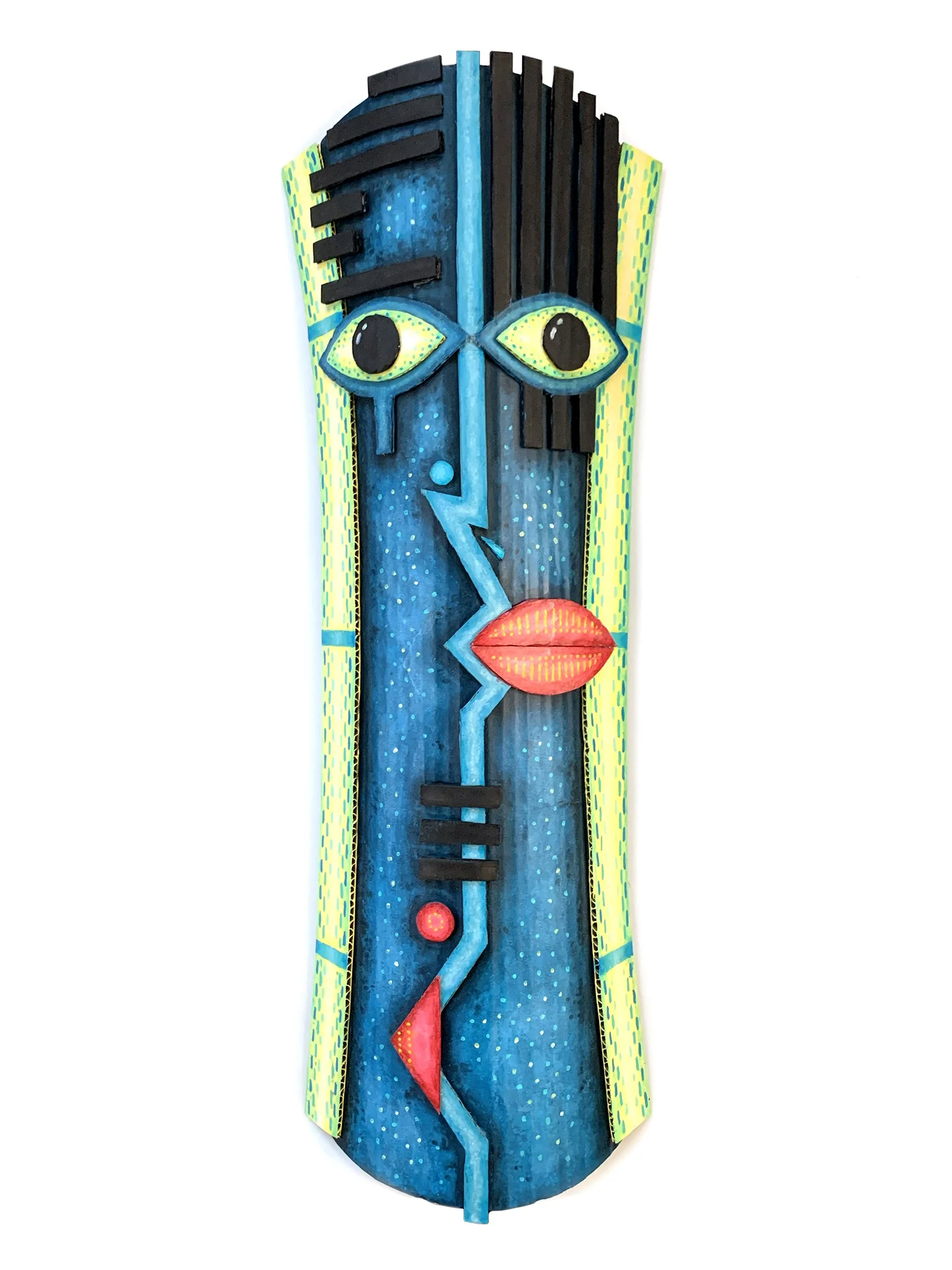Filipino Folklore Mask Set
Years ago, popular artist Nick Fisher (@sickfisher) generously gifted my wife and I a custom painted vintage mask. I hung that mask up on one of the four support beams in our lounge space. I loved it so much that I decided to create 3 companion masks to fill out our lounge and complete the collection. For this project I borrowed Nick’s color palette, but pulled from my own heritage for the subject matter. The result was a set of three masks inspired by Filipino myths and legends. From left to right: Bakunawa (the serpent who swallowed the seven moons), Manananggal (bisecting vampire) and Malakas at Maganda (Adam and Eve)
medium: cardboard and acrylic paint
Bakunawa
A giant serpent known as the “moon-eater.” Tales of Bakunawa say that it is the cause of eclipses. The Pre-colonial Filipinos believed that their supreme god created 7 moons to light up the sky (hence the 7 crescent moons on the mask). Bakunawa was so amazed by their beauty that he rose from the ocean and swallowed the moons whole. In order to keep the moons from being completely lost, ancient Filipinos organized a parade where they would bang on pots and pans in order to scare Bakunawa into spitting the moons back into the sky. They were apparently only able to coax it into spitting out one moon.
Manananggal
A bisecting vampire that sprouts large bat-like wings and sucks blood via sharp fangs and tongue. The word “Manananggal” comes from the Tagalog word “tanggal,” which means "to separate." So Manananggal literally translates to "separator" or "one who separates itself" (hence the “bloody” tear at bottom-torso along with some “creeper hands” just above it). I wanted to incorporate the large bat-like wings, but didn’t want to break the silhouette of the design. So I represented it with the black cape-like shapes on ether side of the chest. Lastly we’ve got that gaping mouth with fangs, an oversized tongue and a little bat nose thrown in for fun.
Malakas at maganda
The precolonial Filipino creation myth of “Malakas at Maganda,” which translates to “Strong One and Beautiful One.” Legends say that the world’s first bird was hit by a bamboo pole during the creation of the Philippine islands. Annoyed, the bird struck the bamboo until it split. From one half emerged a man, and from the other half a woman. I decided to follow suit and divide this mask in half, with a man on the left and a woman on the right. The shapes on the left hint at a masculine figure: short hair, a strong nose and a hairy chest. While on the right we have long hair, an upturned nose and full lips. This is all bookended by a split bamboo stalk to help to distinguish it from the other masks without breaking the silhouette too much.




